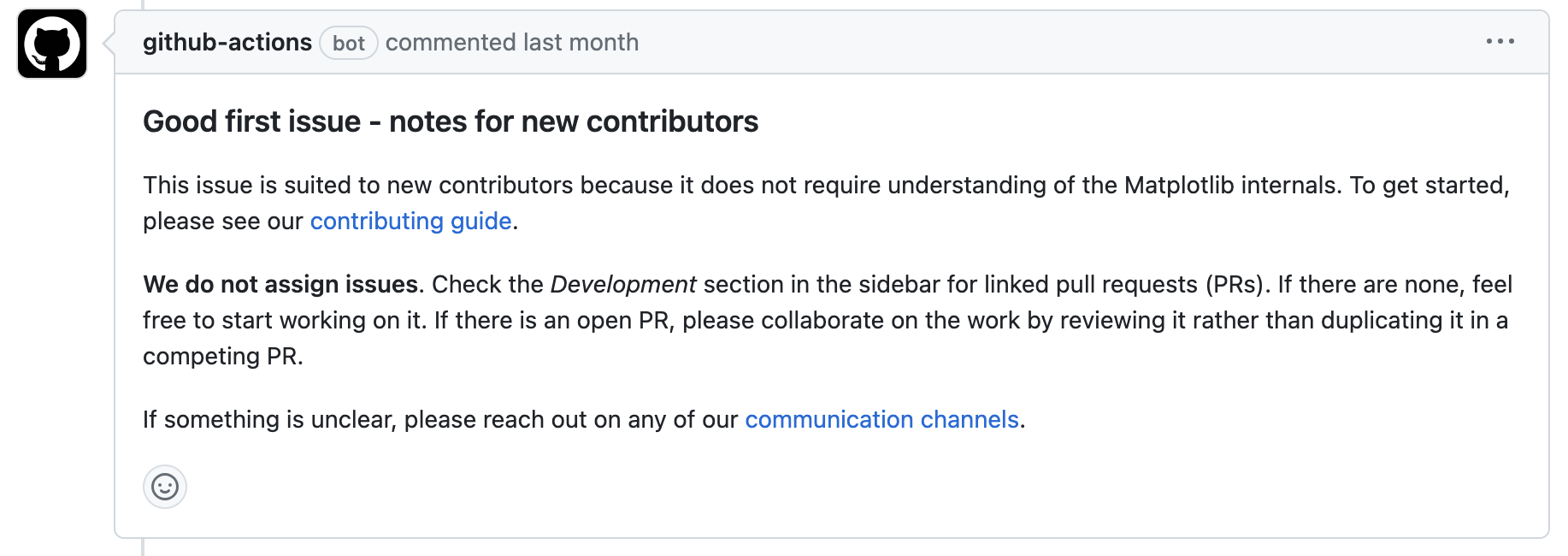Onboarding newcomers
Whether you are just getting started with a small project that you would like to see grow, or working on a large established project that needs to be sustainable, you may want to find, onboard and train new contributors to your project. Below are a few ideas about contributor onboarding and how to make it work.
Onboarding new contributors can be a lot of work, and you need to ask yourself if this is the right move for your project, at the current stage it is at. Many projects already have a healthy contributor base, and they need to be spending time and resources in other areas, such as supporting existing maintainers or developing new features.
Growing your contributor community
Research shows that one of the prime factors driving new contributions to an open source project is popularity. This means that you can expect a popular project to have a steady stream of contributors looking to participate.
If that’s not your case, you may want to invest in a few actions that will help.
1. Good documentation
Whether you are looking for code, documentation, community or any other kind of contribution, make sure your onboarding workflow is well documented and up-to-date. There are many excellent resources available online about good general documentation, including the WriteTheDocs community. If you have the resources, consider creating user stories and/or contributor journey maps to identify points of friction.
2. Listen to your community
The more connected you are with your community and your user-base, the better. This can be very hard, especially if you have a broad user-base or if your community doesn’t have a way to connect with maintainers. If you have a user forum, any communication channels or social media accounts, use them as a way to understand your community needs and also how they can help you - listen to your experienced users, domain experts and other engaged community members.
3. “Good first issues”

Good first issues selected by the community are a good way to help newcomers choose tasks to work on. They should be relatively self-contained, and ideally they can be easily found by newcomers on your issue tracker (either through search, labels or your website).
4. Sprints
Working sprints can be self-organized or attached to an event, such as a conference or meetup. Although they are short and often unpredictable in audience size, many people look at sprints as a way to get started with some degree of assistance from another contributor.
Sprints are a good opportunity to get people started on tasks that are not necessarily self-contained, and thus wouldn’t fit a “Good first issue” classification - but that might be tractable on a two-day sprint, with a maintainer around to answer questions.

Ask why they are here
People contribute to open source for a variety of reasons: they may be users looking to solve a bug or add a feature they need themselves; they may be looking for opportunities to learn or develop their skills; they may be looking for professional networking opportunities or some type of recognition to improve job prospects in the future. In any case, don’t assume you know why they are here! The best way to understand what they want and how you can work together is to ask.
Casting a wide net vs. recruiting for specific tasks
While it may be tempting to wait for the perfect person who has the background, experience and knowledge to implement that one feature you have been waiting for, it may pay off to cast a wide net and be open to folks who may bring different skills, expertise and interests to your community.
However, if you are short on resources or don’t have the bandwidth to onboard folks, it is perfectly fair (and healthy!) to set expectations clearly. If you need people to know a version control system such as Git before joining your project, make sure this is communicated clearly. This will avoid frustration on both sides and will help you and your contributors spend time more effectively.
Mentoring
Individual mentoring takes time and effort. This will most likely include teaching concepts, reviewing contributions, providing detailed feedback and outlining the reason behind project decisions. It is important to be clear with your mentee about the time commitment you are able to make, and to set clear expectations about the level of support you are able to provide.
Forging pathways and setting expectations
For a lot of projects, the only contribution pathway readily available is code. However, healthy communities might need a wide range of skills and contribution types, including documentation, design, community management, translations, and even help with fundraising. If you are looking for a specific type of contribution, make sure you communicate that clearly.